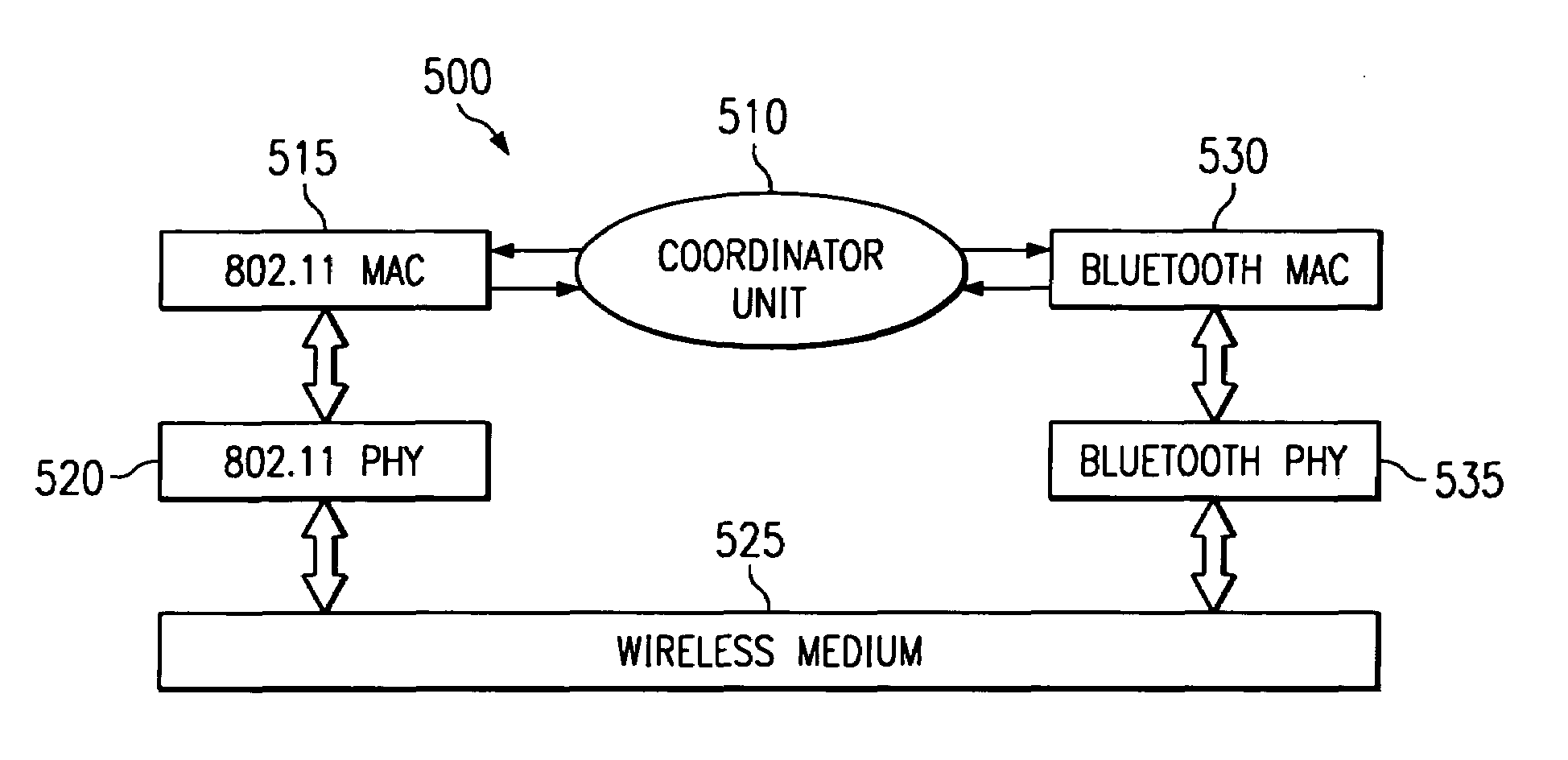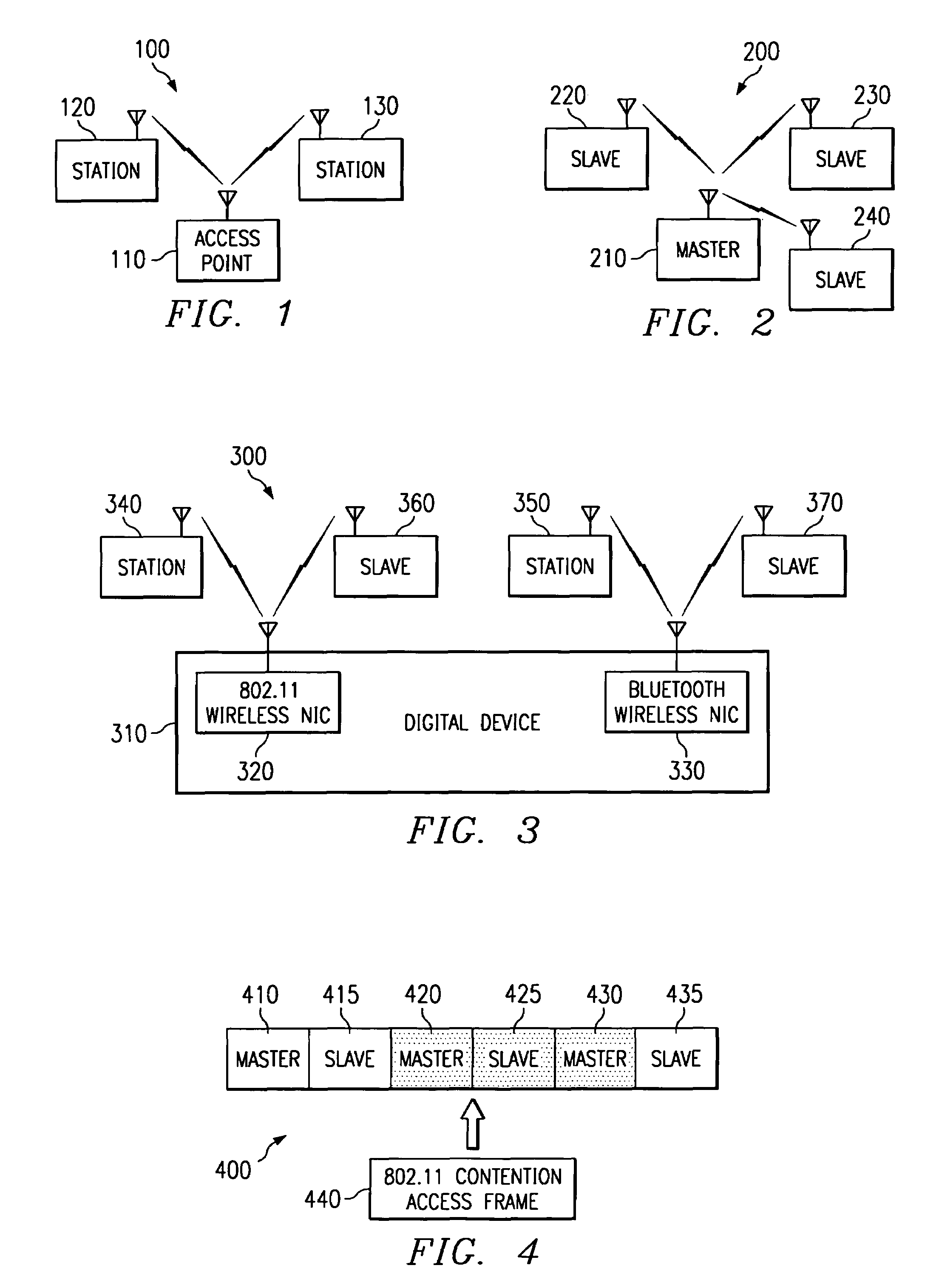Collaborative mechanism of enhanced coexistence of collocated wireless networks
a wireless network and wireless network technology, applied in the field of communication networks, can solve the problems of wireless network interference, performance degradation, network data transfer rate, etc., and achieve the effects of reducing packet collisions, facilitating upgrade, and optimizing network performan
- Summary
- Abstract
- Description
- Claims
- Application Information
AI Technical Summary
Benefits of technology
Problems solved by technology
Method used
Image
Examples
Embodiment Construction
[0034]The making and use of the various embodiments are discussed below in detail. However, it should be appreciated that the present invention provides many applicable inventive concepts which can be embodied in a wide variety of specific contexts. The specific embodiments discussed are merely illustrative of specific ways to make and use the invention, and do not limit the scope of the invention.
[0035]Wireless networks have become extremely popular with users of digital equipment. They allow a degree of mobility and flexibility that has not been available until recently. A user with a digital device connected to a wireless network can roam freely within the operational range of the network without being encumbered by wires. Additionally, more sophisticated wireless networks permit configurations wherein multiple networks can be setup so that the user can transparently roam between the networks without noticing the change in networks taking place or needing to make any adjustments ...
PUM
 Login to View More
Login to View More Abstract
Description
Claims
Application Information
 Login to View More
Login to View More - R&D
- Intellectual Property
- Life Sciences
- Materials
- Tech Scout
- Unparalleled Data Quality
- Higher Quality Content
- 60% Fewer Hallucinations
Browse by: Latest US Patents, China's latest patents, Technical Efficacy Thesaurus, Application Domain, Technology Topic, Popular Technical Reports.
© 2025 PatSnap. All rights reserved.Legal|Privacy policy|Modern Slavery Act Transparency Statement|Sitemap|About US| Contact US: help@patsnap.com



